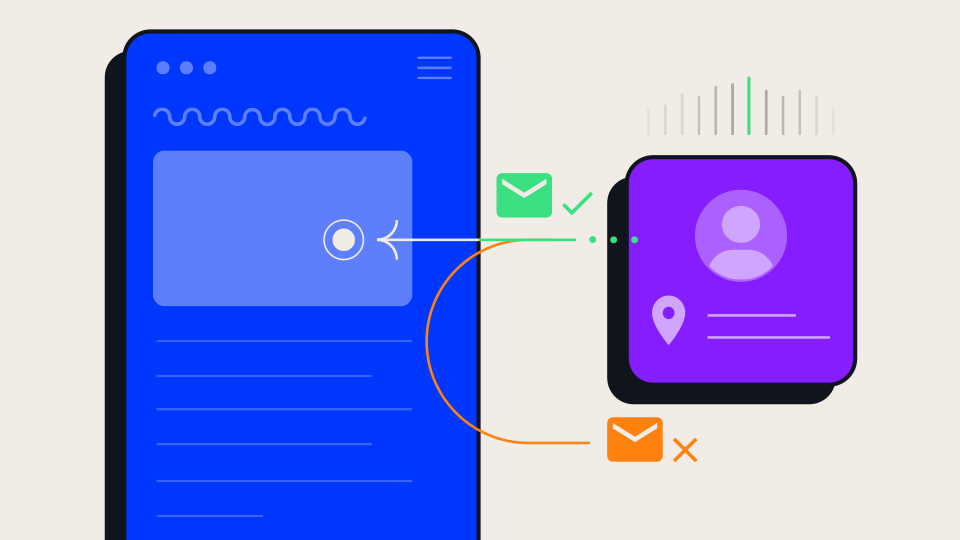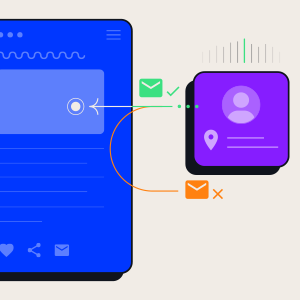Accessibility Reinforcement Act: Rethinking email marketing

The impact of the Accessibility Strengthening Act on email marketing
On June 28, 2025, the Accessibility Strengthening Act will come into force. By this date, companies must have adapted their digital offerings to enable barrier-free access for all users. This is intended to significantly improve the participation of people with disabilities in social life. This has far-reaching implications for all digital offerings - including websites, apps, e-book readers, self-service terminals, telecommunications services and email marketing.
Who is affected - who needs to react?
In principle, every major company in Germany must implement the various requirements of the law. This includes manufacturers, retailers and importers of certain products such as e-book readers as well as service providers, e.g. providers of email marketing software. Micro-enterprises with fewer than ten employees or an annual turnover of less than two million euros are exempt from the regulation.
And: The law only applies to B2C for the time being - pure B2B websites do not have to implement the requirements - for the time being. In any case, it is advisable to put the topic on the agenda. On the one hand, pure B2B offerings can also benefit from a better overview, clearer structure and better texts. On the other hand, it is not unlikely that the Accessibility Strengthening Act will be extended to other areas in the future.
The requirements and their impact on email marketing
The implementation of the Accessibility Strengthening Act requires a rethink in email marketing. Existing templates and content not only need to be revised, but also consistently designed to be accessible. Our Optimizely Consulting team will support you in this - from analyzing your current mailings to developing fully accessible templates.
- This includes the use of easy-to-understand text and the integration of alternative texts for images and graphics.
- In addition, the presentation of information should be clearly structured to ensure optimal readability.
- Important information should never be contained exclusively in images or graphics, as these may not be captured by automatic readers.
- Color contrasts must comply with WCAG 2.1 standards, at least at level AA. WCAG stands for: Web Content Accessibility Guidelines. The Accessibility Strengthening Act refers to WCAG Version 2.1 Level A and AA as the binding standard for digital accessibility.
- Get advice now - our consulting team will show you how to make accessible email marketing a success. Get in touch now!
While these requirements are more of a content-related nature, there is also a lot to consider on the technical side (here are some examples):
- In future, emails must be compatible with screen readers and other assistive technologies.
- This also includes the development of adaptable layouts for different end devices (laptop, tablet, smartphone) as well as accessibile interaction elements.
- In order to meet the high requirements of the Accessibility Strengthening Act, it is therefore essential to review existing email templates and adapt them if necessary.
- This also includes training marketing teams in accessible communication and implementing quality assurance processes to ensure that all content meets the new standards.
It is also important to distinguish which emails fall under the Accessibility Strengthening Act.
> Transactional emails such as order confirmations or invoices as well as emails regarding contract changes must be designed to be accessible.
Marketing newsletters and general product advertising by email, on the other hand, are not subject to the special requirements of the Accessibility Strengthening Act. Nevertheless, companies that strive for accessibility can ensure that their marketing emails are accessible to all when creating them. This includes using accessible design practices, such as:
- Text alternatives for images: Using alt text for images to communicate the content of the email to users with visual impairments. +
- Structured layouts : A clear and understandable structure that allows screen readers to easily interpret the content.
- Color contrasts: Ensure that the text has enough contrast with the background to be readable for people with color vision impairments.
- Accessible fonts: Avoid fonts that are difficult to read and use clear and legible fonts instead.
Although marketing emails are not directly subject to the Accessibility Strengthening Act, it is good practice to consider accessibility to appeal to a wider audience and promote inclusion.
Accessibility check in Campaign
Particularly exciting: Optimizely Campaign will have an accessibility checker in the future. The accessibility check will be applicable for emails and landing pages and cover the following areas:
- General settings such as language
- Alternative texts for images
- Use of semantic HTML and labeling of layout tables
- Accessible links, buttons and forms
- Spacing and contrasts
- Keyboard operability and zooming
Do you have further questions about the feature? Our Campaign Product Team looks forward to hearing from you.
Opportunities through accessibility and AI support
However, the implementation of the Accessibility Strengthening Act not only offers challenges, but also numerous opportunities. Through accessible email marketing, companies can expand their reach and increase customer satisfaction. By ensuring that your emails are accessible to all users, you can reach a wider audience, including people with disabilities. They often have specific needs and preferences that can be addressed through tailored content and offers.
In addition, all recipients benefit from an improved user experience, as accessible emails are often more clearly structured and easier to read. Companies that prioritize accessibility are also perceived as inclusive and socially responsible. Positive customer experiences can be reflected in positive online reviews and word-of-mouth recommendations, which in turn strengthens the brand image.
Artificial intelligence (AI) can provide valuable support in the implementation of accessible email campaigns. AI-supported tools are able to check emails for accessibility and make suggestions for improvement. In addition, AI enables content to be adapted more precisely to individual needs, including specific accessibility requirements. Automatically generated alternative texts for images can also be created by AI systems.
Conclusion
Overall, the Accessibility Strengthening Act represents a significant challenge for companies in email marketing, but at the same time offers the opportunity to thoroughly scrutinize their own communication strategy and thus improve it for all users. By implementing accessible email campaigns, companies not only meet legal requirements, they can also extend their reach and increase customer satisfaction.
Use the Accessibility Strengthening Act as an opportunity to optimize your newsletter marketing and reach an even larger target group with an accessible template. Our Campaign Product Team looks forward to hearing from you.
- Last modified: 7/1/2025 2:55:13 PM


